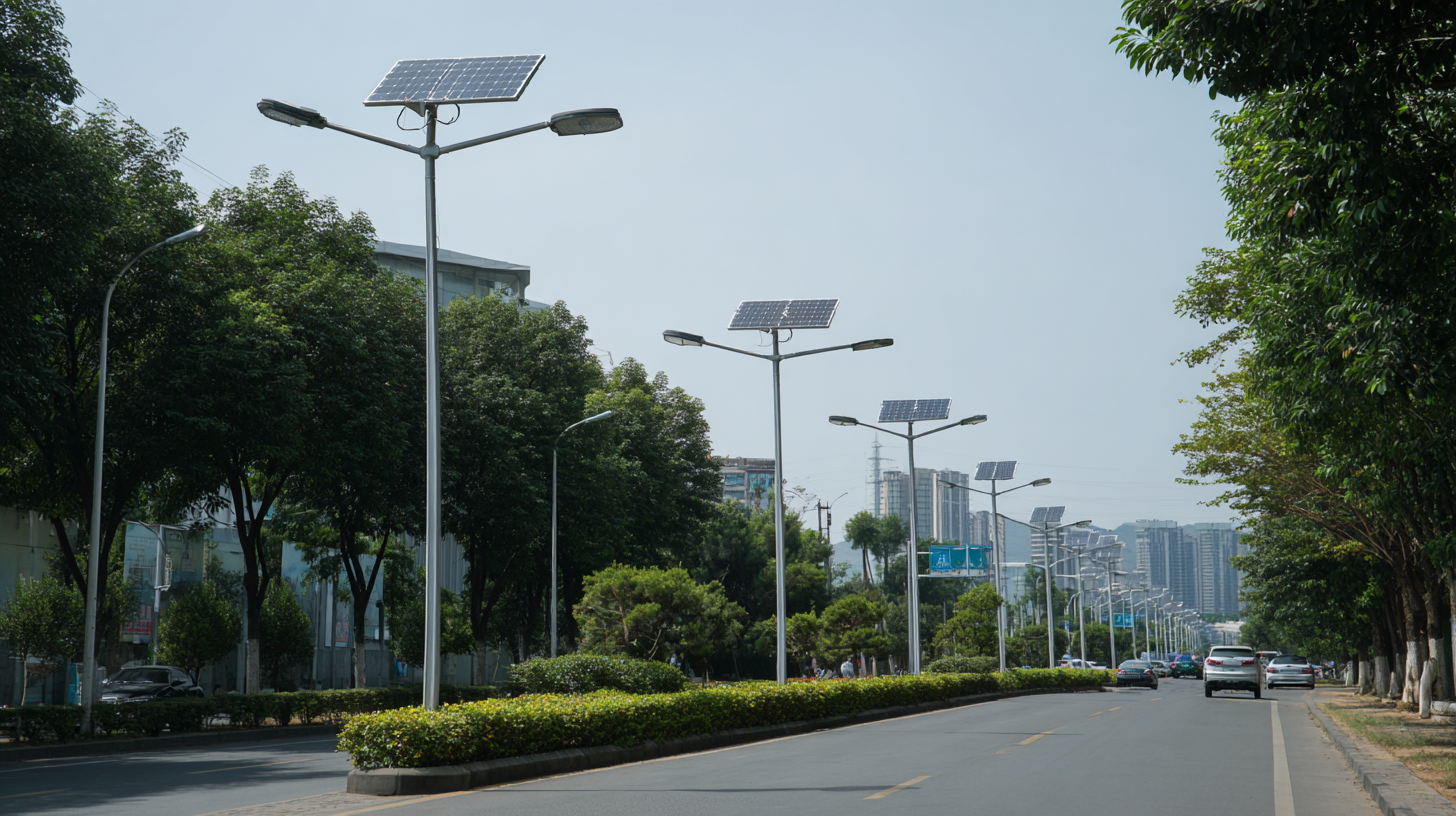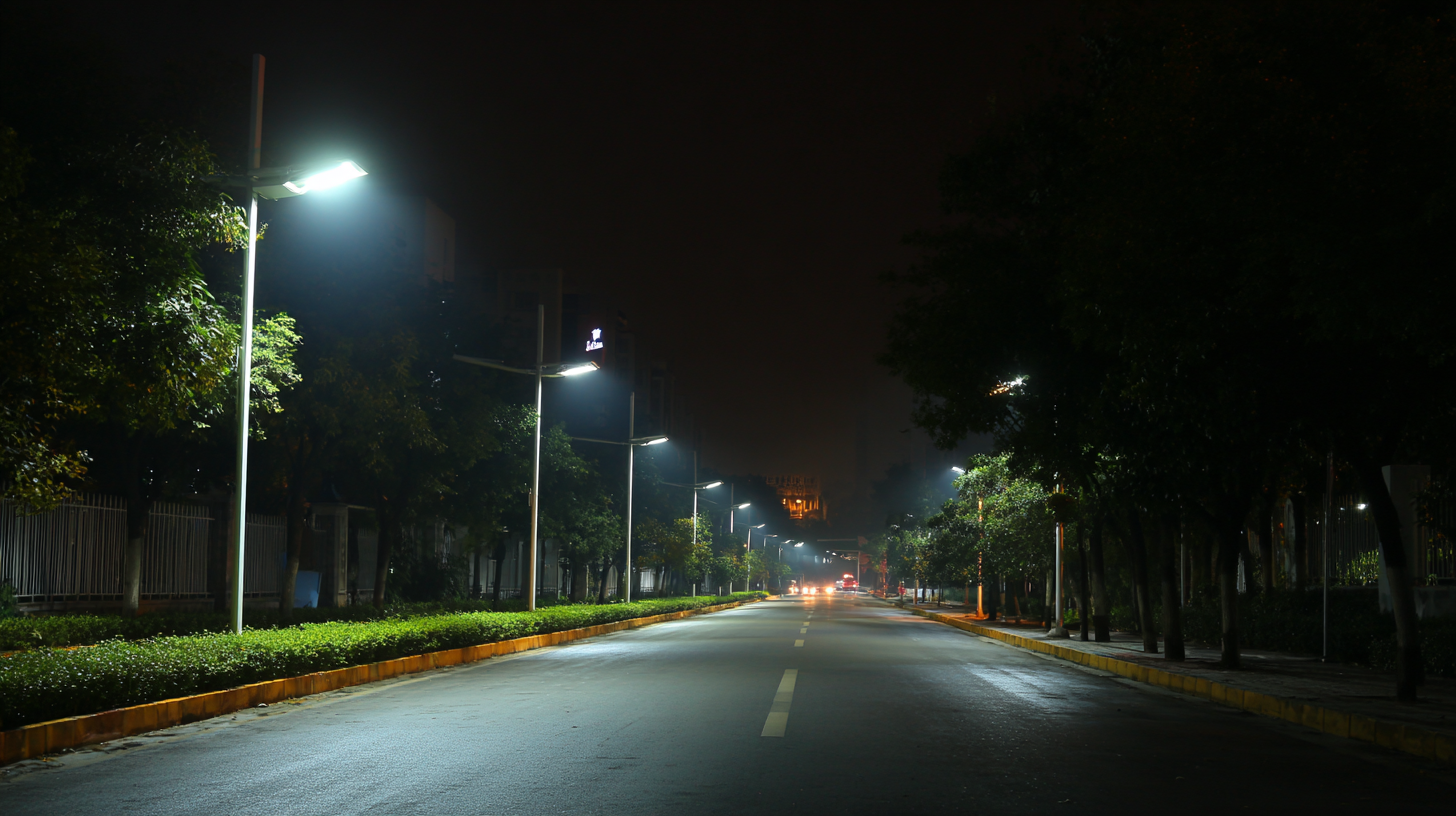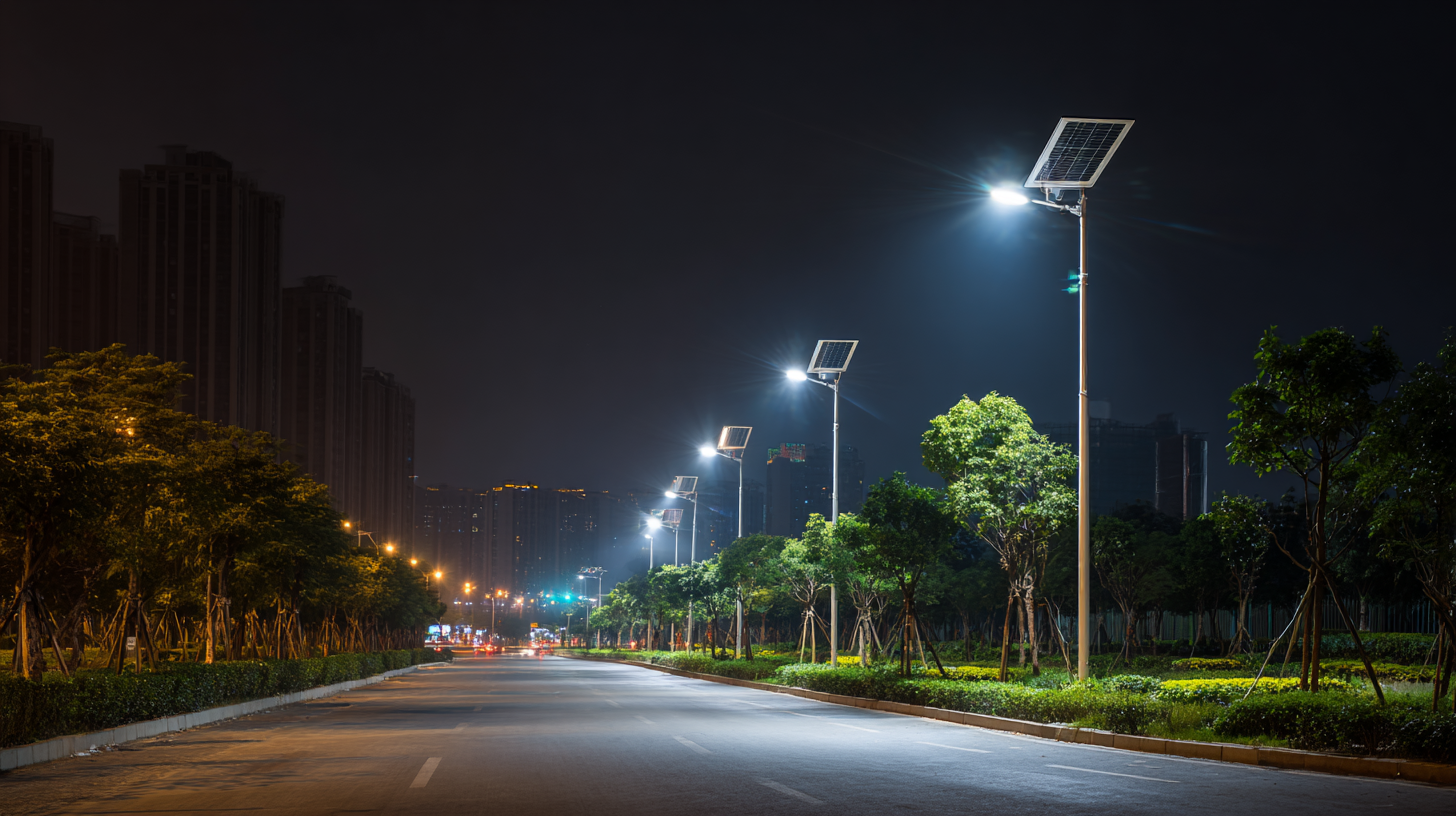Innovative Solar Powered Street Lights Showcase at 2025 China Import and Export Fair 138th Session
As the global demand for sustainable energy solutions continues to rise, the emergence of Solar Powered Street Lights has become increasingly significant in urban planning and environmental management. According to a report by Grand View Research, the solar street lighting market is projected to reach USD 14.2 billion by 2026, growing at a compound annual growth rate (CAGR) of 20.4% from 2019. This growth is driven by the need for energy efficiency and the reduction of carbon footprints in cities worldwide. The 138th China Import and Export Fair, set to take place in 2025, will showcase innovative technologies in solar lighting, emphasizing the shift towards green infrastructure. With benefits such as reduced operational costs and improved public safety, the adoption of Solar Powered Street Lights is not just a trend but a necessary evolution in urban environments. This event highlights not only the manufacturing capabilities of China but also its commitment to promoting renewable energy technologies on a global scale.

Innovative Features of Solar-Powered Street Lights for Sustainable Urban Development
The integration of solar-powered street lights into urban infrastructure represents a significant advancement in sustainable urban development. According to a report by the International Renewable Energy Agency (IRENA), the global solar lighting market is projected to reach USD 8.1 billion by 2025, reflecting a growing trend towards renewable energy solutions in urban settings. These innovative street lights not only reduce reliance on conventional energy sources but also significantly lower greenhouse gas emissions. For instance, solar street lights can decrease CO2 emissions by approximately 2.5 tons each year per unit, making them a vital component of urban sustainability efforts.
Moreover, the innovative features of these solar-powered lights enhance their appeal for municipalities challenging to meet rising energy demands. Many models come equipped with smart technologies, such as motion sensors and remote monitoring systems. According to a study by MarketsandMarkets, the smart street lighting market is expected to grow from USD 8.3 billion in 2020 to USD 24.1 billion by 2025, driven in part by the increasing adoption of solar technology. These features not only provide better illumination but also optimize energy consumption, paving the way for smarter, greener cities focused on sustainable growth.
Innovative Solar Powered Street Lights Showcase at 2025 China Import and Export Fair 138th Session
| Feature | Description | Benefits | Environment Impact |
|---|---|---|---|
| Solar Panels | High-efficiency photovoltaic solar panels for energy conversion. | Reduced energy costs and independence from the grid. | Minimized carbon footprint and renewable energy usage. |
| LED Lighting | Long-lasting and energy-efficient LED bulbs. | Lower maintenance costs and reduced electricity consumption. | Less waste and lower overall energy demand. |
| Smart Sensors | Motion and light sensors for automated operation. | Enhanced safety and efficiency by automatically adjusting brightness. | Reduced light pollution and energy wastage. |
| Durable Materials | Corrosion-resistant and weatherproof materials. | Increased lifespan and lower replacement costs. | Less frequent disposal leads to lower environmental impact. |
| Remote Monitoring | Real-time data collection and analysis for performance tracking. | Proactive maintenance and better resource management. | Optimized energy use resulting in lower emissions. |
Market Growth Projections for Solar Street Lighting Solutions in China by 2025
The solar street lighting market in China is poised for significant growth by 2025, driven by increasing government initiatives and rising awareness about sustainable energy solutions. With advancements in solar technology and a shift towards greener infrastructure, the demand for solar-powered street lights is expected to surge. The integration of smart features and renewable energy sources aligns with the global push for eco-friendly urban development, representing a crucial opportunity for various stakeholders in the renewable energy sector.
Market projections reveal a robust compound annual growth rate (CAGR) for solar street lighting solutions, highlighting the potential of this emerging industry within China. As cities increasingly prioritize sustainability and energy efficiency, investment in solar street lighting not only addresses environmental concerns but also enhances public safety and urban aesthetics. The combination of innovation in solar technology and supportive policies signals a promising future for solar street lighting systems, ensuring they play a vital role in the modernization of urban infrastructures throughout the country.
Market Growth Projections for Solar Street Lighting Solutions in China by 2025
Comparative Energy Savings: Solar-Powered vs. Traditional Street Lighting Systems
The 2025 China Import and Export Fair 138th Session highlighted the revolutionary advancements in solar-powered street lights, providing a compelling alternative to traditional lighting systems. In the comparison of energy savings, solar-powered street lights stand out not only for their reduced carbon footprint but also for their long-term cost-effectiveness. Unlike conventional systems that rely on electrical infrastructure, solar street lights harness the sun’s energy, offering a sustainable solution that can significantly decrease energy bills for municipalities.
When considering the transition from traditional to solar-powered street lighting, several tips can enhance the decision-making process. Firstly, evaluate the solar exposure of the installation site, as maximum sunlight will ensure optimal energy efficiency. Secondly, prioritize high-quality solar panels and batteries that can withstand local weather conditions to guarantee durability and performance. Lastly, seek out projects or entities that have successfully implemented solar lighting to learn from their experiences and challenges.
As cities strive for greener energy solutions, the adoption of solar-powered street lighting not only enhances urban environments but also reflects a commitment to sustainable practices. By investing in such innovative technologies, communities can ensure brighter and more environmentally friendly streets while benefiting from significant savings in energy consumption.

Impact of Solar Street Lights on Urban Safety and Nighttime Visibility Statistics
The introduction of innovative solar-powered street lights at the 2025 China Import and Export Fair represents a significant leap in urban infrastructure. These systems not only provide sustainable lighting solutions but also contribute to enhanced urban safety. In areas with adequate solar street light installation, statistics indicate a notable reduction in crime rates due to improved visibility during nighttime hours. This visibility has proven to be crucial in deterring potential criminal activities, as well-lit streets allow for better surveillance and increased public presence.

Moreover, the implementation of solar street lights positively impacts nighttime visibility for pedestrians and motorists alike. Research shows that areas illuminated by solar technology experience fewer accidents and greater pedestrian comfort. By promoting safer travel environments, these street lights encourage outdoor activities in urban spaces during the night, fostering a more vibrant and secure community atmosphere. Integrating such innovative lighting solutions can transform the approach to urban design, ensuring that safety and sustainability go hand in hand.
Technological Advances in Solar Panels and LED Integration for Street Lighting
At the 2025 China Import and Export Fair 138th Session, the spotlight is on the latest innovations in solar-powered street lights. Significant technological advances in solar panels and LED integration have revolutionized outdoor lighting solutions. These advancements provide not only enhanced energy efficiency but also improved durability and performance in diverse weather conditions. The integration of high-efficiency solar panels allows for maximum sunlight absorption, enabling the lights to operate reliably even during cloudy days or in low-sunlight conditions.
Moreover, the synergy between cutting-edge LED technology and modern solar solutions results in street lights that consume significantly less energy while providing superior illumination. The longevity of LED bulbs combined with the autonomy offered by solar energy means reduced maintenance costs and a decreased carbon footprint for municipalities. As urban areas increasingly seek sustainable solutions for public infrastructure, these innovative solar-powered street lights exemplify how technology can create greener, more efficient cities while enhancing public safety and visibility in urban environments.
Related Posts
-

Solutions for Maximizing Efficiency with the Best 20w Cob Bright Light
-

What are the Benefits of Using Solar Pathway Lights for Your Landscape
-

7 Essential Tips for Choosing the Right Solar Motion Sensor Light for Your Home
-

Elevating Global Standards: The Rise of China’s Best Sensor Headlights in Quality and Innovation
-

What Is an Emergency Work Light and How Does It Enhance Safety in Critical Situations?
-

7 Key Tips to Choose the Best Waterproof Headlamp for Outdoor Adventures
